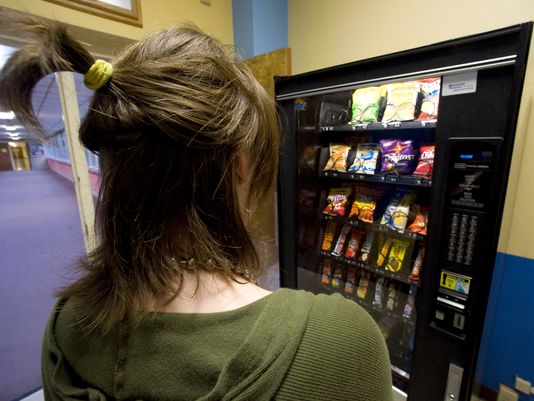
As the United States struggles to deal with obesity rates and adolescent diabetes, school officials may want to reconsider the choices and systems they offer in the lunchroom.
Vending machines can be easily located in the hallways of most schools. These machines are always well-stocked with enticing snacks such as crunchy chips and delicious candy bars in shiny packages. Teenagers insert all their small change into these machines in exchange for empty calories of processed sugar. It’s just too convenient and enticing for anyone to pass up.
Many students have been depending on these vending machine snacks as a meal replacement as they consider the lunch lines too long for a limited lunch period.
“I just insert my money and out comes my snack,” said Julie Zhang, a junior at Beckman High.
Megan Francisco, a senior at Beckman High said, “I buy chips every day. Chips are so good — unlike fruits and vegetables.”
Health consciousness is the last thing on the minds of academically-stressed students who constantly move on a bell schedule. Yet the average school year consists of 180 days. A 27 gram bag of plain potato chips contains about 150 calories. With daily consumption, that calculates to 27,000 empty and unnecessary calories per school year.
Some schools have realized how popular and even lucrative these unhealthful vending machines have been. And those that are concerned have replaced the types of snacks with relatively healthier snacks. Nonetheless, the calorie counts and the nutritional content of new products are comparable to previous selections.
Students are constantly making choices throughout the day. If school administrators offer poor choices, they have to assume that students will make them.

